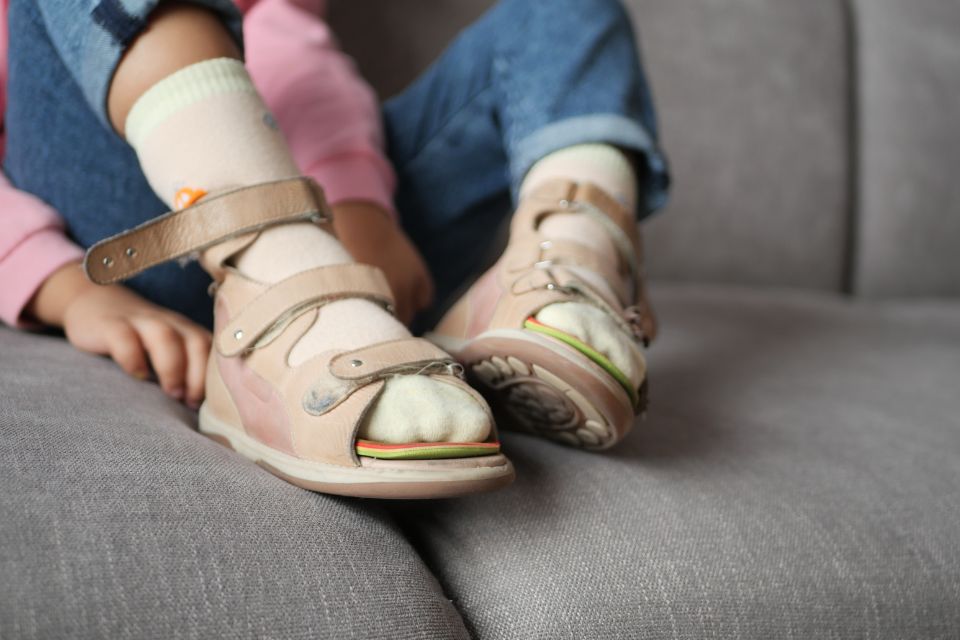Toe walking can be a normal phase for toddlers, but when it persists, families often look for clear answers about what’s happening and what to do next. Understanding the difference between developmental variation and a gait pattern that needs attention can spare a child from discomfort and keep their mobility on track. Orthoses play a pivotal role in guiding the foot toward a stable heel-to-toe pattern, and they work best within a coordinated care plan. If you’re exploring options, this guide explains how orthoses are chosen, how they help, and when other therapies are added. You’ll also see how early steps toward evaluation lead to smoother outcomes and fewer setbacks, and where to Find out more if you want deeper clinical detail or local referrals.
Understanding Idiopathic Toe Walking and Its Developmental Causes
Idiopathic toe walking describes a habitual pattern of walking on the forefoot without an identifiable underlying neurological or orthopedic cause. Many toddlers briefly experiment with this pattern as they build balance and confidence, but persistent toe walking past age 2–3 warrants a closer look. Clinicians first rule out conditions such as cerebral palsy, muscular dystrophy, tethered cord, or autism spectrum-related sensory drivers before labeling a gait as idiopathic. When tightness in the gastrocnemius-soleus complex or a shortened Achilles tendon develops, the habit can become structurally reinforced, making change harder over time. This is why Orthotic Treatment For Toe Walking is often paired with targeted exercises to address both mechanics and muscle length.
Key developmental factors that influence toe walking
In typical gait development, toddlers learn to modulate ankle motion, allowing a gentle heel strike, controlled ankle dorsiflexion, and a stable push-off. Sensory seeking behaviors can complicate this sequence: some children enjoy the bounce and speed of forefoot walking, while others avoid heel contact because of tactile sensitivity. Family history also plays a role; toe walking can run in families even in the absence of neuromuscular diagnoses. Environmental factors—like minimalist footwear on slick floors or limited outdoor play—may subtly encourage forefoot patterns. A thorough exam includes range-of-motion testing, the Silfverskiöld test to differentiate gastrocnemius versus soleus tightness, and observation of running, jumping, and balance tasks.
Signs that merit evaluation by a pediatric specialist
Parents often notice difficulty standing with heels down, frequent tripping, or complaints of tight calves after active play. Shoes may show disproportionate wear at the forefoot, and children might avoid activities requiring heel contact, such as descending stairs slowly. If ankle dorsiflexion with the knee extended is limited to neutral or less, the risk of contracture increases and early action becomes more important. School staff and coaches may report unusual gait patterns during gym class or fatigue compared with peers. These observations help inform whether simple reassurance is appropriate or whether a plan—often beginning with Orthotic Treatment For Toe Walking—should move forward.
How AFOs and SMOs Help Correct Pediatric Gait Abnormalities
Orthoses such as ankle-foot orthoses (AFOs) and supramalleolar orthoses (SMOs) are designed to encourage stable alignment and consistent heel contact. AFOs span the ankle and lower leg, controlling plantarflexion to prevent excessive toe-first landings while allowing forward progression. SMOs are lower-profile devices that wrap the ankle bones to improve medial-lateral stability and proprioception; they are often used when ankle control is the main issue without a significant contracture. Selecting between these devices depends on range of motion, strength, sensory profile, and the child’s response to cueing. When combined with gait training, orthoses can gradually replace a toe-first habit with a smoother heel-to-toe pattern and reduce compensations at the knee and hip.
Mechanics of heel-to-toe gait with orthoses
The primary job of an AFO in toe walking is to limit excessive plantarflexion at initial contact, enabling the heel to meet the ground first. This creates a stable base for tibial advancement during mid-stance and supports controlled ankle dorsiflexion, which lengthens the calf in a functional way. SMOs improve frontal-plane control, reducing wobble and helping children sense where their feet are in space; for mild toe walking with sensory components, this proprioceptive boost can be enough. Some AFOs include a plantarflexion stop and a dorsiflexion assist to fine-tune timing through the gait cycle. If you’d like to Find out more about materials and hinge options, pediatric orthotists can demonstrate how stiffness and trimlines influence motion.
Fitting, comfort, and the break-in process
A successful orthosis is one a child will actually wear, so comfort and routine matter. Orthotists typically recommend a gradual break-in schedule—starting with 1–2 hours and checking skin, then increasing daily—to prevent pressure areas. Socks without seams, shoes with removable insoles, and a firm heel counter help the orthosis function without rubbing. Families should expect minor adjustments as the device “settles” and the child becomes more active. When Orthotic Treatment For Toe Walking is paired with motivating goals—like playing a favorite sport or keeping up on walks—adherence tends to improve.
Early Diagnosis and Collaboration Among Orthotists and Therapists
Early diagnosis enables timely muscle-length management and behavior shaping before a toe-first pattern becomes entrenched. Pediatricians often initiate referrals after a well-child check notes persistent forefoot contact or limited dorsiflexion. From there, a coordinated team—pediatric orthotist, physical therapist, and sometimes occupational therapist—builds a tailored plan. Objective measures such as ankle goniometry, balance assessments, and video gait analysis set a baseline. This shared data guides decisions about orthotic type, exercise dosing, and whether to add night stretching splints or other adjuncts.
Roles across the pediatric care team
- The pediatric orthotist fabricates and adjusts devices, choosing materials and hinges to meet gait goals without sacrificing comfort.
- The physical therapist addresses strength, motor planning, and flexibility, and coaches families on practice strategies that stick.
- Occupational therapists contribute sensory regulation strategies that ease heel contact for children with tactile sensitivities.
- Physicians rule out underlying conditions and coordinate medical interventions if needed.
This collaboration ensures that Orthotic Treatment For Toe Walking is not a stand-alone fix but a hub within a broader, child-friendly approach. Regular case reviews help the team refine goals, celebrate gains, and troubleshoot barriers like shoe fit or school-day adherence.
Tracking progress and adapting the plan
Progress is rarely linear, especially during growth spurts, so the team sets checkpoints at 4–8 week intervals. Therapists may use timed walking tests, stair negotiation tasks, and simple heel-toe walking drills to quantify change. Orthotists look for improved heel wear on shoes and verify that the orthosis still aligns with bony landmarks as the child grows. If gains stall, settings can be tightened (for example, adding a plantarflexion stop) or the home exercise program can be intensified. Families who document gait with short videos often spot subtle wins sooner and can Find out more about effective cues by reviewing footage with their providers.
When to Combine Orthotic Care with Stretching or Serial Casting
Orthoses guide the foot and ankle, but limited range of motion can still block a heel strike if the calf is too tight. When dorsiflexion lags—especially with the knee extended—adding structured stretching or serial casting helps lengthen the musculotendinous unit. Stretching protocols emphasize long-duration, low-load holds that respect tissue physiology and avoid pain-driven guarding. Serial casting applies gentle, continuous stretch over one to three weeks, with casts changed periodically to progressively increase dorsiflexion. The decision to combine approaches is individualized, based on age, severity, and the child’s tolerance for each modality.
Stretching routines that complement orthoses
Home programs focus on consistency over intensity. Therapists often teach wall calf stretches, step hangs, and kneeling stretches that target gastrocnemius and soleus separately. Night splints or adjustable AFOs can maintain gains overnight, preventing the muscle from “rebounding” tight. Parents can weave stretches into daily life—after baths, during story time, or while watching a short show—to reduce resistance. When integrated with Orthotic Treatment For Toe Walking, these routines reinforce the new movement pattern the child practices all day.
Serial casting: indications, process, and what to expect
Serial casting is considered when dorsiflexion is stuck at or below neutral despite diligent stretching, or when fixed equinus is emerging. The process is straightforward: a clinician applies a below-knee cast with the ankle positioned just past available dorsiflexion, then replaces it every 5–10 days to nudge range gradually. Children can walk in most casts with a protective shoe, and families receive guidance on skin checks and activity precautions. After the final cast, orthoses and therapy take over to protect the new range and retrain gait. The key is continuity—casting creates opportunity, while orthoses and practice cement the heel-to-toe habit.
Long-Term Follow-Up and Family Involvement in Treatment Success
Sustained improvement in gait depends on growth-aware follow-up and family-centered routines. Children outgrow orthoses quickly, so fits are reviewed every 3–6 months or sooner if red marks, slipping, or new tripping appears. As heel contact becomes consistent, the team may step down support—from rigid AFOs to articulated AFOs, then SMOs, and eventually to supportive shoes alone. Periodic re-measurement of dorsiflexion and observation of running and stair use verifies that the gains hold under higher demands. Parents who understand why each component matters are better equipped to spot small setbacks early and request timely tweaks.
Home strategies that boost carryover
Families make the biggest difference between appointments by creating routines that encourage heels-down play. Simple ideas include walking on varied surfaces outdoors, playing “freeze heel strike” games, and practicing slow-motion stair descents with rail support. Reward charts can transform daily stretches and wearing time into predictable habits, especially for younger children. Sharing care plans with teachers and coaches ensures cues are consistent across settings, preventing mixed messages. When questions arise, caregivers can ask to Find out more about alternative shoe options, sock choices, or scheduling strategies that ease school-day wear.
Milestones, weaning, and celebrating progress
Weaning is gradual and goal-based: first shorten daytime wear in low-demand settings, then trial short periods without the device during therapy-guided tasks. If toe walking reappears, families temporarily step back to the previous level of support and consult the team. Many children maintain improvements through growth spurts with occasional tune-ups—new footbeds, updated trimlines, or a brief return to night splints. Documenting milestones with photos or videos helps children see their progress and stay motivated. By keeping Orthotic Treatment For Toe Walking anchored in education, consistent practice, and responsive follow-up, families build durable habits that support lifelong, confident movement.




